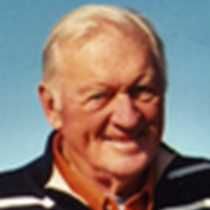Clarkston, Washington
Clarkston, Washington and Lewiston, Idaho face each other at the confluence of the Snake and Clearwater rivers. The two towns gave rise to alternate guest trips – one aboard jet boats to Hells Canyon, the other across the panhandle of Idaho along the 1805 and 1806 routes of Lewis & Clark.
Jet boating offered an opportunity to see wildlife. Big Horn sheep, mule deer, eagles and hawks were treats of the day. A light rainstorm added a touch of drama to the excursion. Early reaches of the Canyon displayed some of North America’s most exciting geological features. For example, fan-like columnar basalt formations welcomed visitors into the Canyon proper, followed by granite, sandstone and limestone deposits that tell a story stretching back millions of years. Ancient petroglyphs were photographed, and much of the route guarded by Russian Olive trees and other durable trees and bushes. Guests lunched at Heller’s Bar, one of the river’s popular way stations. River guests came back early enough to join the Lewis & Clark contingent at the Nez Perce interpretive center and museum near Spalding, Idaho.
North Central Idaho is the scene of the Corps of Discovery’s struggle over the Bitterroot Mountains in November 1805. Forced to chew on tallow and eat small birds and one of their young horses, members of the Corps literally staggered into Nez Perce country. Linn Laughy, the local guide, took guests to five sites where research indicated the Lewis & Clark party camped, ate, negotiated with Nez Perce Indians, built dugout canoes, and hunted for game. Those stops included a coffee stop, a brief lecture on several cross-river adventures experienced by the Corps, and a hearty lunch in the small town of Kamiah, Idaho, which is within the Nez Perce Reservation.
When both groups met at the Nez Perce Visitor Center, guests enjoyed a brief lecture by a National Park Ranger, roamed the exhibit – which features an original “Jefferson Peace Medal,” and books and Pendleton Woolen Mill products in the gift shop.
Today’s Nez Perce story includes a horse breeding program (a new breed of Appaloosa called Akhal-Teke), a language program, and the reintroduction of Gray Wolves and Coho Salmon.
Recap included a re-telling of the Chief Joseph story by historian Junius Rochester and a review of the flora and traditions of the Nez Perce world by naturalist Linda Moore Burback.
Clarkston, Washington and Lewiston, Idaho face each other at the confluence of the Snake and Clearwater rivers. The two towns gave rise to alternate guest trips – one aboard jet boats to Hells Canyon, the other across the panhandle of Idaho along the 1805 and 1806 routes of Lewis & Clark.
Jet boating offered an opportunity to see wildlife. Big Horn sheep, mule deer, eagles and hawks were treats of the day. A light rainstorm added a touch of drama to the excursion. Early reaches of the Canyon displayed some of North America’s most exciting geological features. For example, fan-like columnar basalt formations welcomed visitors into the Canyon proper, followed by granite, sandstone and limestone deposits that tell a story stretching back millions of years. Ancient petroglyphs were photographed, and much of the route guarded by Russian Olive trees and other durable trees and bushes. Guests lunched at Heller’s Bar, one of the river’s popular way stations. River guests came back early enough to join the Lewis & Clark contingent at the Nez Perce interpretive center and museum near Spalding, Idaho.
North Central Idaho is the scene of the Corps of Discovery’s struggle over the Bitterroot Mountains in November 1805. Forced to chew on tallow and eat small birds and one of their young horses, members of the Corps literally staggered into Nez Perce country. Linn Laughy, the local guide, took guests to five sites where research indicated the Lewis & Clark party camped, ate, negotiated with Nez Perce Indians, built dugout canoes, and hunted for game. Those stops included a coffee stop, a brief lecture on several cross-river adventures experienced by the Corps, and a hearty lunch in the small town of Kamiah, Idaho, which is within the Nez Perce Reservation.
When both groups met at the Nez Perce Visitor Center, guests enjoyed a brief lecture by a National Park Ranger, roamed the exhibit – which features an original “Jefferson Peace Medal,” and books and Pendleton Woolen Mill products in the gift shop.
Today’s Nez Perce story includes a horse breeding program (a new breed of Appaloosa called Akhal-Teke), a language program, and the reintroduction of Gray Wolves and Coho Salmon.
Recap included a re-telling of the Chief Joseph story by historian Junius Rochester and a review of the flora and traditions of the Nez Perce world by naturalist Linda Moore Burback.




